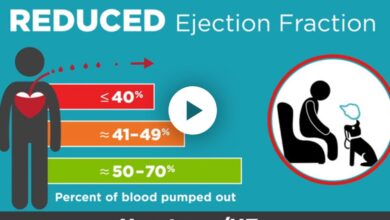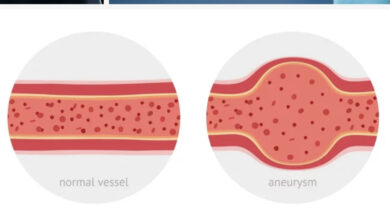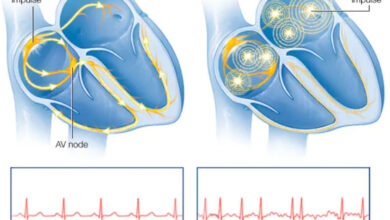HIGH BLOOD PRESSURE: It’s Still The Silent Killer!

HYPERTENSION:
High blood pressure (HBP) has for decades been called “the silent killer.” It works insidiously while you’re completely unaware of the harm it’s causing. It affects your heart, your kidneys, your eyes, your brain, and every arterial blood vessel in your body. Blood pressure is a measurement of the tension in the blood vessel walls. In most people, that tension is normal, but in nearly 50% of the population, it is elevated.
BP is expressed in millimeters of mercury, abbreviated mmHg (Hg is the chemical symbol for mercury). Two numbers are reported; the Systolic BP and the Diastolic BP. Systolic BP is the first number and is the pressure the vessel wall reaches when the heart pumps a volume of blood through the arteries. When the heart relaxes and fills again, the blood vessels also relax. The second number, the diastolic BP, is the measured tension in the vessel walls during this relaxation, re-filling period. So you see BP reported as 120/80, or systolic of 120 mmHg “over” diastolic of 80 mmHg.
Each heartbeat forces a volume of blood rapidly through the arteries, to the capillaries, then to the veins. With each contraction of the heart, blood exerts a force against the blood vessel walls. If the heartbeats 72 times a minute for 24 hours, that’s 103,680 times each day when blood is forced through the blood vessels. Calculating that over a life span is a huge number and damage to blood vessels is bound to occur. If the pressure (tension) in the vessels is elevated, severe damage to several organs is possible. Most susceptible to “target-organ” damage are the kidneys, brain, retinas, and the heart. When the heart pumps blood against a higher than normal pressure, just like a weight-lifters biceps, the heart enlarges and it’s walls thicken.
Medical professionals treat HBP to prevent damage to those susceptible organs. BP treatment prevents strokes, kidney failure and dialysis, retinal hemorrhages and blindness, heart attacks and heart failure. Those events can still occur, of course, but statistically, the reduction is so significant there is no controversy regarding the value of BP lowering.
The controversy, or disagreement, occurs when doctors try to decide what BP levels are optimal. What level is normal? What BP level should be treated and how aggressively? What drugs should be used? Is there a specific treatment protocol? Hundreds of studies have been done to answer these questions. Numerous committees have been convened to determine policy. The American Heart Association (AHA), American College of Cardiology (ACC), the American College of Physicians (ACP), and the American Academy of Family Physicians (AAFP) all weigh in on recommendations, but the Joint National Committee (JNC) on hypertension treatment is the voice of authority.
The JNC first met in 1977 (JNC-1) and has since met 7 more times, most recently in 2014 (JNC-8). Because they are established, working agencies, the AHA and ACC issue guidelines more frequently than the JNC, most recently in 2017. The recommendations of the various committees differ very little. They all emphasize aggressive treatment, BP control, and lifestyle modifications. Most interestingly, the BP level considered normal has been lowered so a higher percentage of U.S. adults now have hypertension. The percentage increased from 32% to 46%, a 50% increase. Nearly half of U.S. adults have high blood pressure, and “70%-79% of men ages 55 and older are now classified as having hypertension.” Current Guidelines follow.
CURRENT BLOOD PRESSURE
TREATMENT GUIDELINES
(2017 AHA/ACC RECS.)
NORMAL BLOOD PRESSURE—less than 120/80 mmHg
ELEVATED BLOOD PRESSURE—Systolic BP between 120-129 mmHg and
Diastolic BP less than 80 mmHg
HIGH BLOOD PRESSURE STAGE 1–Systolic BP between 139-139 mmHg or
Diastolic BP between 80-90 mmHg
HIGH BLOOD PRESSURE STAGE 2–Systolic BP 140 mmHg or higher or
Diastolic BP 90 mmHg or higher
HYPERTENSIVE CRISIS—Systolic BP over 180 mmHg and/or
Diastolic BP over 120 mmHg
TREATMENT GOALS:
For patients with a known cardiovascular event and a 10-year ASCVD risk over 10%
130/80 mmHg
For patients without cardiovascular disease and lower risk 140/90 mmHg
Categories of “Prehypertension” and “borderline BP” have been eliminated.
Any patient who has had a cardiovascular event (heart attack, stroke), has diabetes, chronic kidney disease, or a 10-year ASCVD risk over 10% and Stage 1 HBP should be treated.
“INTENSIVE TREATMENT REDUCES CARDIOVASCULAR EVENTS AND DEATHS”
Intensive treatment goal—Systolic BP less than 120 mmHg
Standard treatment goal—Systolic BP less than 140 mmHg
“Intensive BP control has the potential to significantly reduce rates of morbidity and death
associated with cardiovascular disease.”
Dr. G’s Opinion: The beneficial effects of lowering blood pressure have been known for decades. The reduction in heart attacks, strokes, kidney disease, and deaths is indisputable.
The only news in these guidelines is that the BP level at which people are called hypertensive, and at which treatment should begin, are both lower. The lower the blood pressure the better, is the conclusion. But there is a point, though, where the BP gets too low and symptoms occur—dizziness, lightheadedness, weakness, fatigue, fainting, and drug side effects. Some people tolerate low BP but many do not. To achieve the target BP goal, medication doses need to be gradually increased raising the likelihood of side effects. So along with the benefits of lower BP comes the chance of adverse drug effects.
I agree with lowering the blood pressure as low as the patient can tolerate. But it takes time and persistence on the part of the doctor and patient. The long-term benefits, however, make those efforts worthwhile.
References: Aleyadeh W, Hutt-Centeno E, et al. Hypertension Guidelines: Treat patients not numbers. Cleveland Clinic J of Med 2019 Jan 86:1,47-56.
ACC.org/latest-in-cardiology/2017/BP-guideline-aha-2017
heart.org/en/news/2018/hypertension-guidelines-one-year-later
health.harvard.edu/heart-health/reading-the-new-blood-pressure-guidelines




